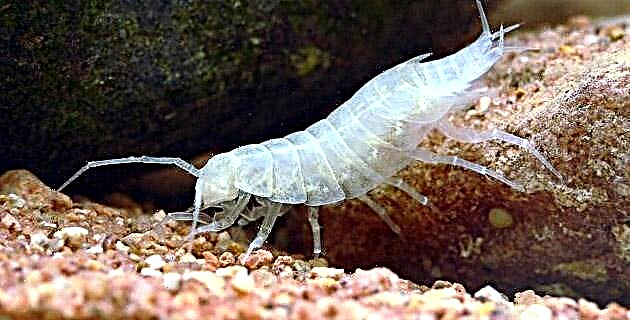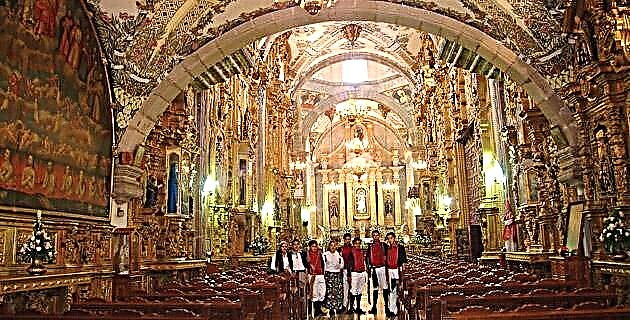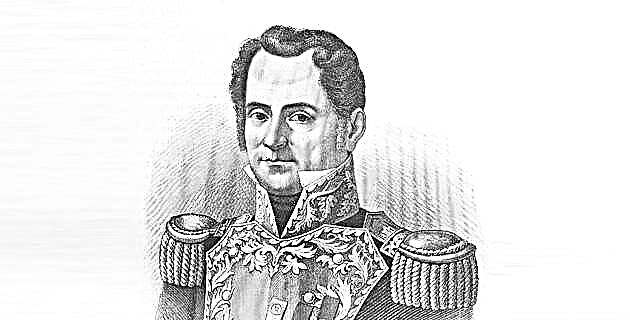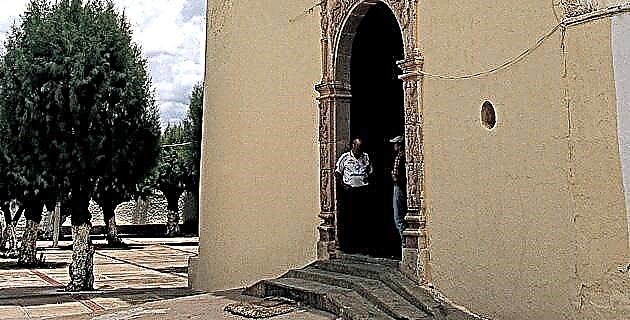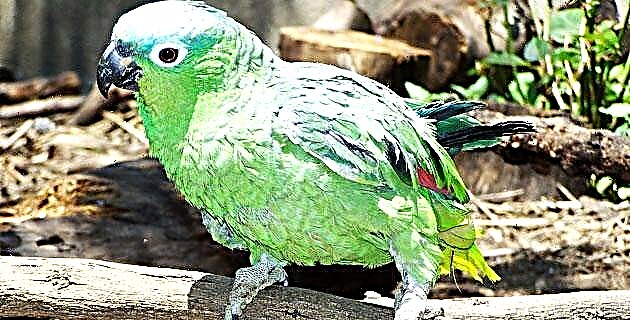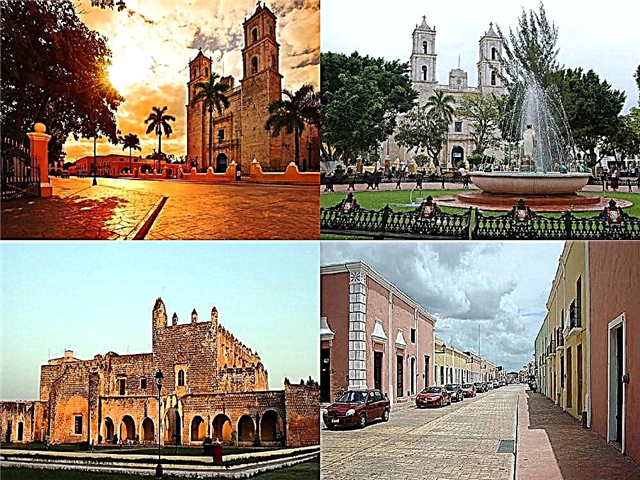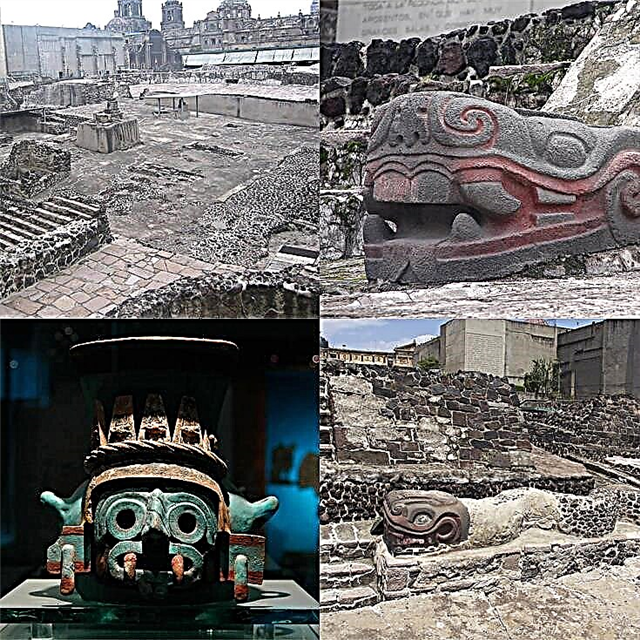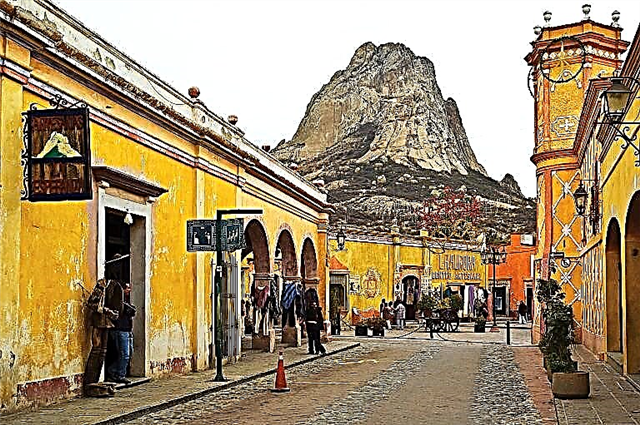Queretaro's Magical Towns bring together beautiful natural attractions, historic architecture, pre-Hispanic and viceregal traditions, delicious cuisine and much more.
Peña de Bernal

Everyone knows Bernal for his rock, but the Magic Town has several attractions, apart from the famous monolith.
Of course, the megalith is the top tourist attraction in this charming cool-climate town, located just 61 km from the state capital, Santiago de Querétaro.
At 288 meters high and weighing approximately 4 million tons, the Peña de Bernal is the third largest monolith in the world. The gigantic rock is only surpassed in size by the Sugarloaf Mountain in Rio de Janeiro and the Rock of Gibraltar at the Atlantic entrance to the Mediterranean Sea.

The rock is one of the world cathedrals for the sport of climbing and the Magic Town is visited regularly by Mexican and international climbers, both novices who want to “pray” for the first time in the sanctuary, as well as experienced climbers.
The first 140 meters of the rock can be ascended by a path. To climb the other half of the monolith, approximately 150 meters, you need climbing equipment.
The monolith has a classic climbing route called La Bernalina. Other paths are The Dark Side of the Moon, Meteor Shower and Gondwana, the latter, for experts only.
Specialists believe that climbing the Peña de Bernal is more difficult than it first seems, so they recommend inexperienced people to be accompanied by a climber who is knowledgeable about the route.

If you go to Bernal between March 19 and 21, you can also enjoy the festival of the spring equinox, a colorful celebration of pre-Hispanic hues, which is never lacking for believers in the magnetic and healing powers of the gigantic stone.
After crowning the rock, being ecstatic with the landscape and taking some spectacular photos at 2,515 meters above sea level, we recommend visiting several places in the charming town of 4 thousand inhabitants.

Some of these places of interest are the Mask Museum, the Sweet Museum, where you can enjoy the delicious goat's milk candies; the Temple of San Sebastián and El Castillo.
The people of Bernal attribute their excellent health and longevity to the good vibes that the peña communicates and the chubby pieces of broken corn, a Queretaro delicacy that you cannot stop trying.
- Read our Definitive Guide to Peña de Bernal
Cadereyta de Montes

The climate of Cadereyta de Montes is dry, cool during the day and cold at night, offering an ideal environment to discover its beautiful viceregal buildings, visit its vineyards and cheese factories, and enjoy its natural spaces.
Cadereyta is located 73 km from Querétaro and 215 km from Mexico City, in the semi-desert of Querétaro where good grapes grow and excellent milk is produced.
The Magic Town of Queretaro is the cradle of good table wines, which pair exquisitely with the cheeses that come out of their farms, making you live a delicate and delicious gastronomic experience.
The town has an interesting Botanical Garden, which houses the most relevant exhibition that exists on the flora of the semi-desert of Querétaro.

The sample of the botanical garden includes more than 3,000 plants of different species, such as cardones, organs, brushes, magueyes, yuccas, mamilarias, biznagas, candelillas, izotes and ocotillos.
Another natural space that you have to visit in Cadereyta is a greenhouse of cactus plants that is the most important in the American continent. It works in the Quinta Fernando Schmoll and houses sabilas, magueys, nopales, biznagas and other succulent species from the country and abroad.
But Cadereyta is not just desert. To the north of the town there is a wooded area where the Forest of Leaves is located, an ecotourism camp where you can stay in a rustic cabin, do outdoor activities and eat the fresh trout that are raised in the place.
The small zócalo of Cadereyta de Montes dates back to the 17th century and is surrounded by beautiful colonial-style houses.

The main religious building in the town is the Church of San Pedro y San Pablo, a temple with a neoclassical façade in which a clock was installed during the Porfiriato.
An artisan tradition in Cadereyta is the work of marble, particularly in the community of Vizarrón, where the pavements are made of this ornamental rock. The temples, family houses, and mausoleums in the cemetery display magnificent marble work.
One of the culinary symbols of Cadereyta de Montes is the Nopal en su Madre or en Penca, a recipe in which the fruit is cooked inside a stalk. A most traditional delicacy!
- Find more information in our Definitive Guide to Cadereyta De Montes
Jalpan de Serra

When the Spanish arrived in the present territory of Jalpan de Serra in the 1530s, the area was inhabited by indigenous Pames.
In 1750 Fray Junípero Serra arrived and raised the mission of Santiago Apóstol, which more than two and a half centuries later would prop up the town to get its name as Pueblo Mágico.
Jalpan de Serra is located in the Queretaro Sierra Gorda, just over 900 meters above sea level, with a warm and humid climate.

The Santiago Apóstol mission and other nearby ones erected by the tireless Majorcan Franciscan friar, are the main hooks that Jalpan throws to the history-loving tourist.
The temple of the Santiago mission was completed in 1758 and on its façade are the figures of San Francisco and Santo Domingo, as well as the Franciscan shield of the arms of Christ and, smaller, the shield of the Five Wounds. Strange thing in this mission is that the sculpture of the honored apostle was removed to put a clock.

Next to the missionary temple there is a building that belonged to the Santiago Apóstol Mission and which was the prison of Mariano Escobedo when the liberal general was imprisoned in Jalpan de Serra during the War of Reform.
Near Jalpan are the Franciscan missions of Nuestra Señora de la Luz de Tancoyol and Santa María de las Aguas, characterized by the beauty of the sculptures of saints and other decorative elements on their facades.
The missions San Francisco del Valle de Tilaco and San Miguel Concá should also be included in the visiting program.

Next to the main square is the Historical Museum of the Sierra Gorda, which works in a 16th century building that was originally the fortress of the population. The sample is made up of valuable pieces and historical documents linked to the Sierra Gorda.
- Jalpan De Serra: Definitive Guide
But in Jalpan not everything is religious and historical tourism. The Jalpan Dam was incorporated in 2004 to the Ramsar list, which includes wetlands of planetary importance for biodiversity. In this body of water you can admire nature and practice water sports.
Tequisquiapan

The popular Tequis is one of the jewels of the Queretaro shoal, with its Cheese and Wine Route and its historic buildings and monuments, museums, water parks, spas, temazcales and other charms.
A sightseeing tour through the streets of Tequisquiapan should begin in the Plaza Miguel Hidalgo, with its beautiful kiosk from the Porfiriato era.
In front of the Plaza Hidalgo is the parochial temple of Santa María de la Asunción, venerated in the town since Tequis bore the name of Santa María de la Asunción y las Aguas Calientes. The church is neoclassical in style and inside the chapels of San Martín de Torres and the Sagrado Corazón de Jesús stand out.

The lower part of Queretaro is a land of wines and cheeses, and houses with a long tradition raise the best nectars and dairy products in the state.
The local wine production is led by wineries such as Finca Sala Vivé, La Redonda, Viñedos Azteca and Viñedos Los Rosales; while the cheese sector is led by Néole, Bocanegra, Flor de Alfalfa and VAI.
Between the end of May and the beginning of June, the National Cheese and Wine Fair is held in Tequisquiapan, a celebration with an informal atmosphere, with tastings, tastings and shows.
In the museum of Tequis, the Museum of Cheese and Wine, the Museo México me Encanta and the Museo Vivo de Tequisquiapan stand out.

The Museo México me Encanta is a curious sample of miniature and small-scale figures, located on Calle 5 de Mayo 11. It exhibits traditional everyday pictures of Mexico, such as street vendors and a burial according to the Christian customs of the country.
For outdoor recreation, Tequis has La Pila Park, the place where the population's first water supply functioned during the viceroyalty. The park has green spaces, bodies of water and sculptures of historical figures.
Venustiano Carranza decreed in 1916 that Tequis was the central point of Mexico and had a monument erected to bear witness to it. This tourist attraction is located on Niños Héroes street, two blocks from the plaza.
- Find much more about Tequisquiapan here!
Saint Joaquin

In the Huasteca Queretana, bordering Hidalgo, the Magical Town of San Joaquín welcomes tourists with its excellent climate, beautiful architecture, parks, archaeological ruins and beautiful artistic and religious traditions.
San Joaquín is the headquarters of the Huapango Huasteco National Dance Competition, which brings together the best performers and performers in the country in this beautiful artistic manifestation.
The contest takes place over a long weekend in late March or early April and there are dance and trio competitions, with the participation of hundreds of couples and dozens of musical groups. A whole intensive of tasty huapango is what is experienced during those days in San Joaquín.

The live representation of Holy Week is another show that attracts thousands of visitors to the Magic Town of Queretaro. The scenes of the Passion of Christ are presented in a very vivid way, with dozens of actors dressed in the costumes of the time.
The archaeological site of Ranas is located 3 km from the town and lived its heyday between the 7th and 11th centuries, leaving several squares, temples and three courts for the ball game as witnesses.
Near the municipal seat of San Joaquín is the Campo Alegre National Park, a beautiful place where the largest picnic in Latin America is held. The massive feast that brings together about 10,000 people is officially dated on the third weekend of August.

In the architectural landscape of the village, the parochial temple of San Joaquín is distinguished, a beautiful church with the tower in the middle, separating the wings of the nave. The tower has a bell tower and clock.
- San Joaquin: Definitive Guide
Our walk through the Magical Towns of Querétaro is coming to an end. We hope you liked it and that you can leave us a brief comment about your impressions. See you soon again.
Do you want more information about Querétaro? Keep reading!:
- 30 Things To Do And Places To Visit In Querétaro

